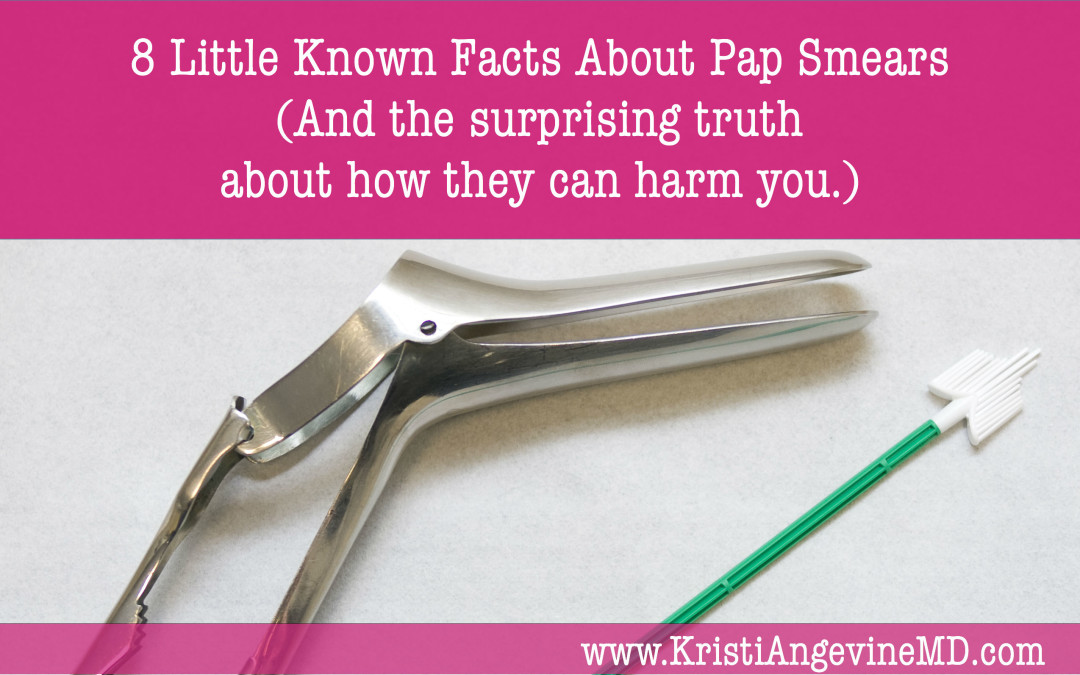
by Kristi | Aug 18, 2015 | Gynecology, Ob-Gyn |
Vaginal discharge: Is it normal? Why does the vagina have ooey gooey weird stuff come out of it? Vast majority of the time, it’s normal. Why? Think of your vagina like your nose or mouth. Both places make moisture: the mouth makes saliva and our noses make mucus. The vagina and cervix do the same thing, but they are hanging upside down and you can’t swallow or sniffle to adjust the discharge. Normal discharge can be clear, white, grey, cream colored, blood tinged, brown, maroon, or even have a yellow/green hue to it. It can vary in how it smells from odorless, to pungent, to metallic depending on where you are in your cycle. How do you know if it’s NOT normal? The take home message is this: If you ever notice discharge that’s really unusual, smells terrible, or is associated with notable, persistent pain, irritation, itching, painful sex, see your doctor so they can verify what’s going on. Here are the simplified nuts and bolts: Does the vaginal discharge smell like really, REALLY strong fish? Does this smell & discharge increase after sex or your period? If yes- it could be a simple bacterial imbalance called bacterial vaginosis (BV). This is not a sexually transmitted infection (STI). It’s fixable with an antibiotic that rebalances the bacteria in the vagina. Does it itch? Does it really, really itch- as in- it’s difficult to leave the house for fear of itching your labia or vagina? If yes, it could be a yeast infection, but the only way to know for sure is to visit your Dr. This is...

by Kristi | Aug 5, 2015 | Gynecology, Ob-Gyn |
If you’ve been with me for a while, you know I’m passionate about Pap smears. (Yes, I know this statement would sound really strange proclaimed by anyone outside of women’s health.) In my daily work, I run into many misconceptions about Pap smears. So, today, let’s dive into a few of them. The Pap smear is synonymous with a woman’s yearly exam. In the office, I talk about pap smears an average of 27.8 times a day, for a total of 2h and 5 min per weekday. Or perhaps, I spend my entire day talking about them. I lose track. I joke because somedays, I feel like ALL I do is talk about Pap smears. It is one of the topics my patients and I discuss frequently, because in the last 10 years, there have been many fundamental changes surrounding the rationale behind how often we do them and thus, there’s, understandably, a lot of confusion and many misconceptions. This confusion stems from the fact that although our knowledge about the utility of the Pap smear has changed dramatically, this doesn’t always equate to how doctors practice or to how people think about their visit to the gynecologist. I want everyone here to have a rock solid understanding of what a Pap does and what a Pap does not do. All this to say, if you’re on the up and up with the 2012 and beyond guidelines, you can skip this entire note and jump on over to Facebook where we can chit chat about cute cat videos or period humor. If you’re not, stick with me. Did you know that most of us should not get yearly Pap Smears? Now,...

by Kristi | Feb 17, 2015 | Gynecology |
Hello everyone! Let’s talk about menopause and perimenopause symptoms, shall we? Have you read that book Our Bodies, Ourselves? Gosh, it’s an old one. It conjures up college years for me. It was first published in in the early 1970’s and re-issued in updated forms every 4-6 years. It’s a manual of sorts that discusses women’s bodies and the physical and emotional changes that occur as we age. I remember picking it up in my early 20’s and pouring over it. Every chapter talked about intimate topics in such a straightforward way. It felt like I’d found a treasure box of vital info that I’d never been privy to. It talked about vaginas, urethras, and clitorises (clitori??). It talked about sex. It talked about orgasm, menopause, pregnancy, breast feeding. It had PICTURES of everything. As a 20 something I was enthralled. It discussed all these topics that typically were discussed in health class that one time in middle school, (when most of us were too self conscious to really listen). It shared them with grace and ease. That book normalized talking about body parts and functions in a way I’d never really heard. Fast forward nearly 20 years and I’m a gynecologist who spends everyday talking with women about their body parts and functions. If you want to see a little of the history of Our Bodies, Ourselves, go here. Knowledge is powerful. Understanding how our body works and knowing what to expect helps us weather changes our body undergoes with grace and ease. Knowing to anticipate a symptom is the next step to having a more relaxed perspective...

by Kristi | Jan 21, 2015 | Gynecology, Ob-Gyn |
The top 4 questions about birth control pills are: 1. Is it normal for my periods to go away or be really light when taking birth control pills? 2. I’ve heard birth control pills can make you infertile…is this true? 3. Will I gain weight on them? 4. Wasn’t Yaz recalled? Let’s dive right in: 1. Is it normal for my periods to go away or be really light? Yes! One of the most common side effects to birth control pills is light or absent periods. This often freaks people out if they don’t know to expect it, but please know, it’s totally normal. The reason behind why this happens helps it make sense. When you’re not on birth control pills, if you normally have a period monthly, then prior to your period, your body has this rise and fall of a few different hormones that prep your body to release an egg from your ovary near the middle of your cycle. This rise and fall pattern of hormones makes a lining of tissue in the uterus build up in preparation for a pregnancy. I like to think of it as if the tissue is building up layers that an embryo will burrow into if you were to get pregnant. These layers of extra tissue build gradually and if at the end of your cycle, you haven’t gotten pregnant, this tissue sloughs off and comes out the blood you see during your period. When on birth control pills, you’re taking in the same amount of hormone every day in the form of the pill. The pills work by telling...

by Kristi | Jul 28, 2014 | Gynecology, Ob-Gyn |
If you have that I’m-already-spread-too-thinly-to-read-one-more-thing feeling when it comes to staying up to date about medical info, this update is for you. It has just what you need to know about Pap smears in an easy to scan list of fast facts, made especially for the time crunched woman. Recently, I wrote a long, detailed post about important, new information that you need to know about Pap smears: 8 little known things about Pap smears. Here’s the short and sweet version for those of you who are BUSY. 1. Pap smears look for cervical cancer. 2. Cervical cancer is caused by HPV*. 3. Cervical cancer is SLOW and takes decades to show up. 4. The way we best find cervical cancer has radically changed; gone are the days of yearly Pap smears for everyone. 5. The American Cancer Society, the US Preventive Services Task Force and the American College of Obstetricians and Gynecologists finally agree on something and that something is how to best screen for cervical cancer! 6. Pap smears should start no sooner than age 21 and if normal, should be repeated every 3 years until age 30. 7. At age 30, it’s best to do Paps and a test for the kinds of HPV that cause the most cancer (high risk HPV). If both the Pap and the HPV test are negative, it should be repeated in 5 years. 8. Once you turn 65 and you’ve had 10 years worth of normal Paps, you should still see your doctor once a year, but you stop Paps. 9. Once you have a hysterectomy, most likely, you never need another Pap smear again. 10. Doing Pap smears more often...

by Kristi | Jul 18, 2014 | Gynecology, Ob-Gyn |
If you don’t get annual Pap smears, you’re going to get some terrible cancer. And it will end up killing you. It’s all over the news. Cancer’s a leading cause of death, right? If you skip a Pap smear: You will feel guilty about not staying on top of that yearly ritual. You will feel sheepish when you finally do go to your Ob/Gyn. And once at your appointment, your doctor will reprimand you. Or will they? Cervical cancer is the one and only cancer that a Pap smear looks for. Cervical. Not cancer of the uterus, not cancer of the ovaries and not cancer of the vagina. Cervical. If you are wondering what the heck the cervix is, you are not alone, so here’s a quick anatomy primer: the vagina is kind of like a sock. It’s open on one end and (for the most part) closed at the top. At the top of the vagina is the cervix, which is the bottom of the uterus. Time to start humming that “ankle bone’s connected to your leg bone” song. Your vagina’s connected to your cer-VIX, the cervix is connected to your uter-US…If you’re wondering, the cervix looks like a pink bagel. In order to see it and swab it (aka a Pap smear), a barbaric looking, but very useful, instrument called a speculum is used. Anyway, over the last decade, experts have learned some amazing things about cervical cancer and how to best screen for it and how to prevent it. By experts, I mean researchers in organizations like the American Cancer Society, the American College of Obstetricians and...








 I am an Ob/Gyn and I love helping people really, truly understand their bodies and live healthy lives. I believe true wellness comes from more than just a pill. When not working I love to mountain bike, cook, learn to sew, and go on adventures with my husband and our daughter.
I am an Ob/Gyn and I love helping people really, truly understand their bodies and live healthy lives. I believe true wellness comes from more than just a pill. When not working I love to mountain bike, cook, learn to sew, and go on adventures with my husband and our daughter.